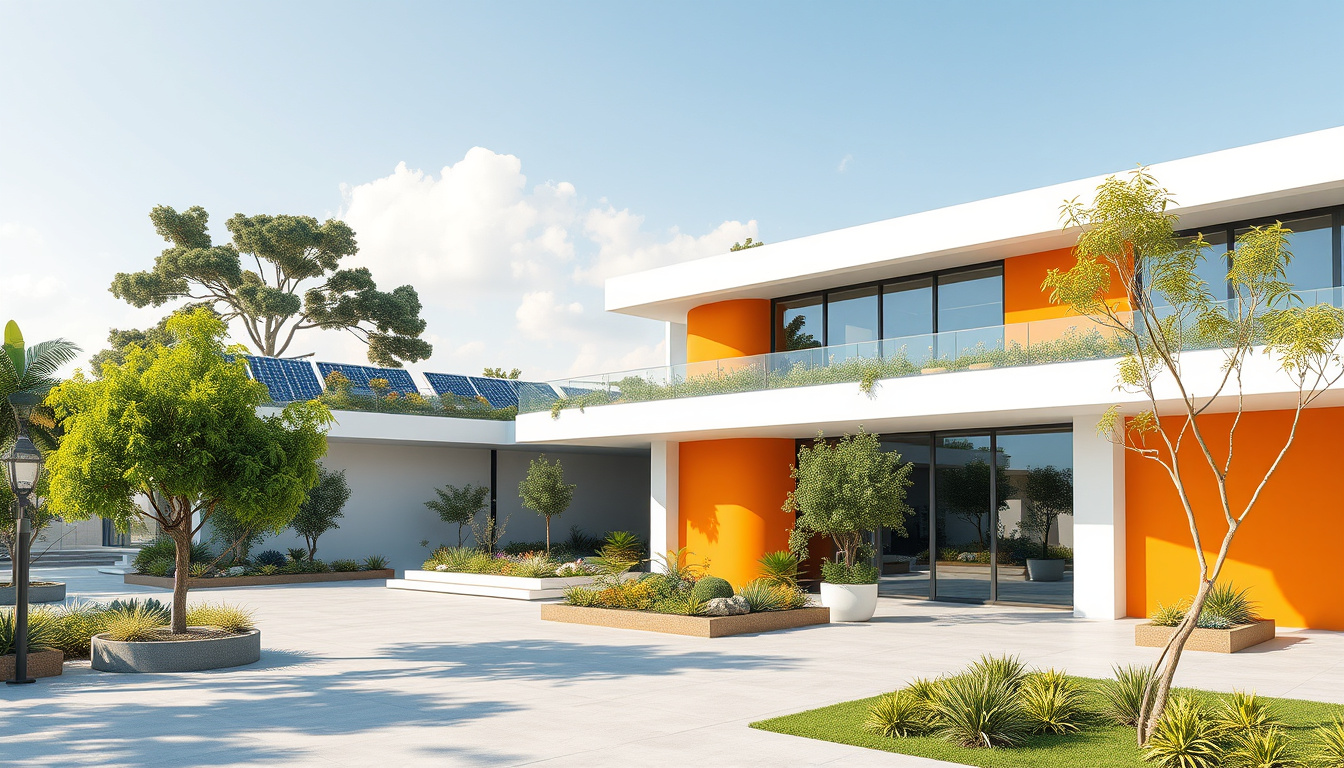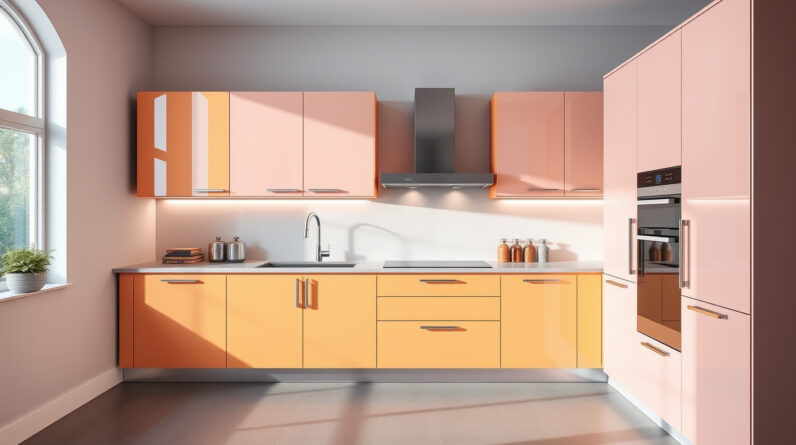In recent years, the construction and design industries have experienced a significant shift toward sustainability. As concerns over climate change, resource depletion, and environmental degradation grow, the importance of incorporating sustainable materials into building projects has become more urgent than ever. Sustainable materials are the cornerstone of eco-friendly building and design, offering a pathway to reduce environmental impact while promoting healthier living and working spaces.
This comprehensive guide explores why sustainable materials are essential, how they are used in modern architecture, and the benefits they bring to both the environment and occupants.
What Are Sustainable Materials?
Sustainable materials are resources that are produced and used in ways that minimize their environmental impact throughout their lifecycle—from sourcing and manufacturing to use and disposal. Unlike traditional building materials, sustainable options prioritize renewable resources, energy efficiency, and low environmental footprint. They also often incorporate recycled or locally sourced components, reducing transportation emissions and waste.
Examples of sustainable materials include bamboo, reclaimed wood, recycled metal, cork, hempcrete, and low-VOC (volatile organic compound) paints. These materials not only reduce the depletion of natural resources but also offer durability, aesthetic appeal, and health benefits.
Why Are Sustainable Materials Important in Building and Design?
Integrating sustainable materials into building projects is vital for multiple reasons:
- Environmental Impact: Sustainable materials help lower carbon emissions, conserve water, and reduce waste generation.
- Health Benefits: They often emit fewer toxins, leading to healthier indoor air quality.
- Economic Advantages: Although some sustainable materials may have higher upfront costs, they typically result in long-term savings through energy efficiency and durability.
- Regulatory Compliance: Many governments now impose green building standards, such as LEED (Leadership in Energy and Environmental Design), which encourage or mandate the use of sustainable materials.
- Social Responsibility: Adopting sustainable materials demonstrates environmental stewardship and can enhance a company’s reputation.

Top Sustainable Materials in Building and Design
Below is a list of some of the most popular sustainable materials shaping the future of eco-friendly construction:
-
Bamboo
A highly renewable resource that grows quickly and absorbs carbon dioxide efficiently. Used for flooring, cabinetry, and structural elements. -
Reclaimed and Recycled Wood
Salvaged wood reduces deforestation and adds character to interiors. -
Cork
Harvested from renewable bark, cork is excellent for flooring and acoustic insulation. -
Hempcrete
A bio-composite made from hemp fibers, lime, and water, offering excellent insulation and carbon sequestration. -
Recycled Metal
Utilizing recycled aluminum, steel, or copper reduces mining impacts and waste. -
Low-VOC Paints and Finishes
Improve indoor air quality and minimize toxic emissions. -
Straw Bickets
Used as insulation, straw is a natural, biodegradable, and efficient thermal insulator. -
Recycled Plastic and PET
Used in various products, including insulation, tiles, and outdoor furnishings. -
Adobe and Earth Masonry
Traditional building materials made from natural earth, offering excellent thermal mass. -
Green Roof Systems
Vegetated roof coverings that help regulate temperature and manage stormwater.
How to Incorporate Sustainable Materials into Your Projects
Transitioning to sustainable materials involves planning, research, and collaboration. Here are some practical steps:
1. Assess Project Goals and Sustainability Criteria
Define clear environmental goals, such as reducing carbon footprint, improving indoor air quality, or enhancing energy efficiency.
2. Conduct Material Research
Explore available sustainable options that fit your design, budget, and geographical context. Consider certifications like FSC (Forest Stewardship Council) or Cradle to Cradle.
3. Engage with Suppliers and Manufacturers
Partner with trusted suppliers who prioritize sustainability and transparency.
4. Prioritize Local and Reclaimed Resources
Using locally sourced or reclaimed materials reduces transportation emissions and supports local economies.
5. Design for Longevity and Flexibility
Sustainable materials should contribute to durable and adaptable spaces that reduce the need for frequent renovations.
6. Educate Stakeholders
Ensure clients, contractors, and team members understand the benefits and proper use of sustainable materials.
7. Monitor and Evaluate
Track the environmental performance of your project and seek continuous improvement.
Benefits of Using Sustainable Materials in Building and Design
Adopting sustainable materials offers numerous advantages:
- Reduced Carbon Footprint: Significantly lowers greenhouse gas emissions.
- Enhanced Indoor Environmental Quality: Results in healthier spaces for occupants.
- Lower Operating Costs: Energy and maintenance savings over the building’s lifespan.
- Resource Conservation: Less reliance on finite natural resources.
- Resilience and Adaptability: Sustainable materials often withstand extreme weather conditions better.
- Market Differentiation: Eco-friendly buildings attract environmentally conscious clients and tenants.
Challenges in Implementing Sustainable Materials
Despite their many benefits, sustainable materials can pose challenges:
- Higher Initial Costs: Some eco-friendly materials are more expensive upfront.
- Availability Limitations: Not all sustainable materials are readily accessible in every region.
- Knowledge Gaps: Lack of awareness or expertise can hinder their adoption.
- Code and Certification Constraints: Navigating building codes and certifications requires diligent effort.
Overcoming these challenges involves continuous education, collaboration, and advocacy for sustainable building practices.
Future of Sustainable Materials in Construction
As technology advances and consumer demand grows, sustainable materials are poised to become the norm rather than the exception. Innovations such as bio-based plastics, nanomaterials, and responsive building skins are paving the way for even more sustainable and efficient structures. According to the U.S. Green Building Council, the integration of sustainable materials will play a crucial role in achieving net-zero buildings and combating climate change (source).
Frequently Asked Questions (FAQs)
Q1: What are sustainable materials in the context of eco-friendly building?
Answer: Sustainable materials are resources sourced and used in ways that minimize environmental impact, promote renewable resources, and often incorporate recycled or eco-friendly components, contributing to green building practices.
Q2: Which sustainable materials are most commonly used in modern architecture?
Answer: Bamboo, reclaimed wood, cork, hempcrete, recycled metal, low-VOC paints, and green roofing systems are among the most popular sustainable materials in contemporary design.
Q3: How do sustainable materials benefit indoor air quality?
Answer: Many sustainable materials emit fewer volatile organic compounds (VOCs) and toxins, resulting in healthier indoor environments for occupants.
Conclusion
Embracing sustainable materials is more than just an eco-conscious choice; it’s a strategic imperative for responsible building and design. They help reduce environmental impacts, improve health and wellness, and enhance the long-term sustainability of structures. As the world intensifies its focus on climate action, integrating sustainable materials into your projects is a vital step toward creating buildings that are not only beautiful and functional but also environmentally accountable.
Now is the time to act—explore innovative sustainable materials, educate your team, and commit to eco-friendly building practices. Your commitment to sustainability can transform communities, inspire change, and pave the way for a greener future. Let’s build smarter, safer, and more sustainable spaces together.








